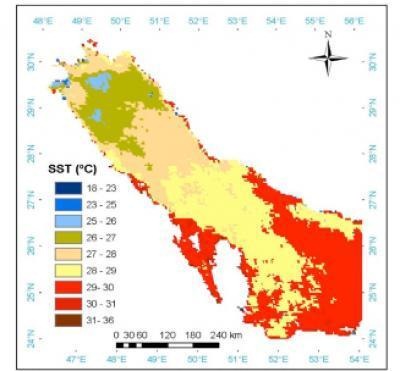Graph of the Day: Sea Surface Temperature in Kuwait Bay, 1985-2007
ScienceDaily (Nov. 30, 2009) — Since 1985, seawater temperature in Kuwait Bay, northern Persian Gulf, has increased on average 0.6°C per decade. This is about three times faster than the global average rate reported by the Intergovernmental Panel on Climate Change (IPCC). Differences are due to regional and local effects. Increased temperatures are having profound effects on key habitats and on power generation the Persian Gulf. Researcher Dr Thamer Al-Rashidi of the National Oceanography Centre, Southampton, said: “Because the waters of Kuwait Bay are well mixed by the tides, measurements of sea surface temperature can be used to assess temperature trends over time in the bay as a whole.” He and his colleagues used data on sea surface temperature (1985-2007) remotely sensed by a number of polar orbiting satellites to assess warming in Kuwait Bay and the Gulf region. The data were ‘ground truthed’ by direct measurements of sea surface temperature in the region, and are in accord with air temperature trends recorded at Kuwait airport, and verify trends found in satellite data. They found that the sea surface temperature of Kuwait Bay increased over the period at an average rate of around 0.62°C per decade, with an uncertainty of plus or minus 0.01°C. This is about three times the rate of average global increase estimated by the IPCC. …
Climate Change in Kuwait Bay: Higher Temperatures Having Profound Effects
